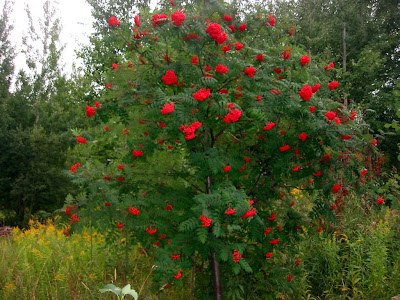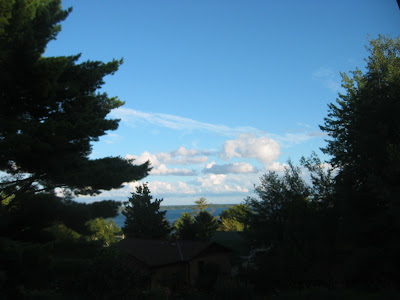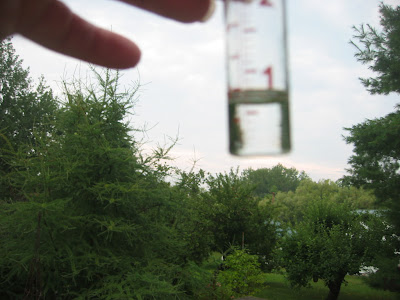


Monday, 8:00 AM. 56 degrees, wind NW, moderate. The sky is clear, the channel wrinkled. The barometer predicts partly cloudy weather. Local weather forecasts had called for lows in the thirties in our region last night.
The plant pictured is Juniperus rigida, a Juniper of Asiatic origin, which has an unusual branching habit. The only reason I mention it, since I don’t care for its aesthetics, is that the one other place I have ever seen it growing is The New York Botanical Garden. The folks up the street, whose yard it resides in, are members of the Minnesota Landscape Arboretum and have received a number of unusual plants thereby. This is a good example of how people move plants around the globe, from one continent and ecosystem to another. This Juniper is merely an oddity…plants that have greater utility or beauty migrate even faster and farther, and these plant migrations have been going on since the first farmers carried seed from one slash and burn garden plot to another, or in pouches and baskets on their continual migrations to find a better or safer place to live. Plants, like people, are always movin’ on.




























































